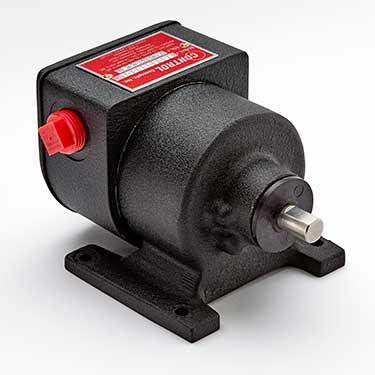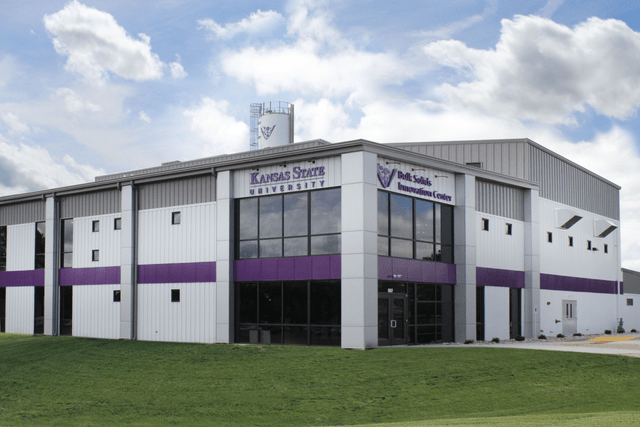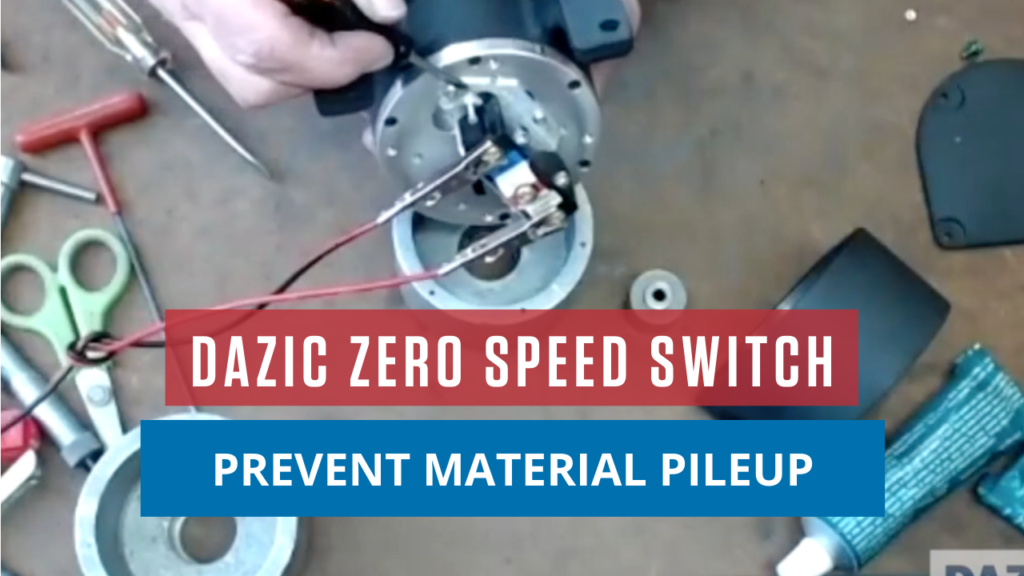Zero Speed Switch: Protect Equipment, Process and People
Comments Off on Zero Speed Switch: Protect Equipment, Process and People
A zero speed switch can help prevent material pileups and detect machine failure. Just like fire alarms, they are cheap, easy to install, and can quickly alert you of a problem and prevent thousands of dollars in damage.
What is a speed switch?
Speed switches are attached to rotating shafts to detect any abnormal change in rotation speed. These shafts are found in many types of plant machinery, from conveyor belts to rock crushers.
How do speed switches work?
Speed switches contain a non-contact inductive sensor probe positioned near the rotating object.
Small metal flags or magnets are mounted on a disc or pulser wrap, which generate pulses as they pass through the probe’s electromagnetic field. The pulses have a frequency proportional to the shaft RPM (rotations per minute).
This simple set-up can help detect any changes in speed. If the RPM does not match the speed trip-points that you have set – either it is moving too fast, too slowly, or stopped completely – a corresponding relay de-energizes and triggers an alarm.
To avoid nuisance tripping caused by normal pauses in speed (such as start-up or built-in time delays), the relay can be programmed to drop out only after a specified time. Some systems will need an external timer, while others can already have it built in.
Check out our video on DAZIC Speed Switches
How can a speed switch improve plant operations?
Prevent downtime
You can lose a whole day of productivity from shovelling material pile-up because an elevator or conveyor belt broke down. If the equipment breaks and the process stops, you’re paying your workers to sit around and do nothing, and essentially losing money.
Prevent wear and tear
Speed switches can prevent the misalignment of couplings, and stress/wear and tear of rollers and other small parts.
Detect machine damage before it becomes expensive to repair
Speed changes can be a sign that equipment needs repair or preventive maintenance. It’s cheaper to fix a small part now, than to replace equipment down the road.
Automate processes
Speed switches are sometimes used to initiate a secondary process once it reaches a particular speed or pre-programmed setting.
Prevent worker injury
The speed of operating equipment can play a big role in workplace safety. Speed switches can prevent accidents or injuries caused by malfunctioning equipment, spillage, or cleaning material pile-up.
Achieve accurate processes
Quality starts with precision. Keep your equipment running at the right speed and know the moment that there is a problem.
Where can I install a speed switch?
Speed switches can be installed on any device with a rotating shaft. This includes:
- Rotary valves
- Bucket elevators
- Belt, drag and screw conveyors
- Fans
- Blowers
- Saw blades
- Drive motors
- Mixers
- Crushers
- Agitators
- Rolling mills
What industries use speed switches?
Some of the world’s biggest companies use speed switches for smoother, safer, and more efficient plant operations.
- Grain, Feed & Milling
- Bulk Materials Handling
- General Manufacturing
- Ethanol/Biofuels Processing
- Sugar Processing
- Packaging
- Food Processing
- Textile Production
- Mining
- Power Generation Plants
- Water Utilities
- Wastewater
What are the different kinds of speed switches?
Zero speed switches differ in their set-up, features, performance specifications, mounting styles, and casings.
2-piece vs 3-piece system
Depending on your process, preferences, and considerations like space or the operating environment, you can opt for a two-piece system or a three-piece system.
A two-piece system only needs a speed switch and rotating target. A three-piece system has a speed switch, a rotating target, and a remotely mounted external sensor.
Technology used
- Electromechanical speed switches mechanically open or close a set of contacts
- Electronic zero speed switches use a lay and electronic circuit
- Magnetic proximity switches use a proximity sensor and a microcomputer
Special applications
Some zero speed switches are designed for harsh outdoor conditions or hazardous plant environments. They can be weather-proof, dust-proof, and explosion-proof. To determine if the zero speed switch you need will meet your specifications look at the product’s National Electrical Manufacturers Association (NEMA) ratings.
Performance and features
Speed switch models cater to different shaft input speeds. Some perform better for applications that have slower start-ups or operating speeds, while others can detect not just when a shaft stops but begins to rotate backwards.
Mounting
Switches need to be securely mounted and aligned to prevent damaging the bearings and causing premature product failure. Proper installation can include mounted brackets and couplings, internal flanges, or plug-in sockets with 8-pin termination.
Find out more about zero speed switches and the DAZIC line.
Control Concepts and AirSweep partner with Kansas State University Bulk Solids Innovation Center
Comments Off on Control Concepts and AirSweep partner with Kansas State University Bulk Solids Innovation CenterControl Concepts Inc. announced it will provide AirSweep® units to the Kansas State University Bulk Solids Innovation Center (K-State BSIC), as part of a partnership to train students and professionals on how to handle bulk materials. Through this donation, AirSweep – a material flow leader – aims to provide professionals with hands-on experience and tested solutions to material blocks.

Designed for on-demand material flow
An AirSweep unit will allow instructors to demonstrate efficient handling of bulk solids and other materials with pneumatic flow aids.
AirSweep technology is particularly effective for materials that can’t be handled by fluidizers and other pneumatic flow aids. Each powerful pulse of the AirSweep nozzle directs a high-pressure, high-volume, 360-degree burst of compressed air or gas, which lifts material back into the flow stream.
AirSweep’s ability to work with many types of bulk solids — from powders, pebbles, to dense or moist compounds — will be particularly useful for observing material flow of different materials. Through proper positioning and timed release, it can create on-demand, first-in/first-out flow to prevent stagnation, spoilage, and other issues that affect product quality and production speed.
Empowering the next generation of plant managers and productivity experts

K-State BSIC is the only university-based, unbiased entity in North America dedicated to improving bulk solids handling.
Aside from the classroom unit, AirSweep units will also be installed at the Center’s 13,000 square-foot lab. This facility is where bulk test materials flow is tested for clients who come from various industries in the US and around the world.
Todd Smith, business and strategy manager for K-State BSIC, welcomes the partnership between the Center and Control Concepts’ AirSweep.
“We look forward to adding the AirSweeps to our full-scale bins as well as a cut-away unit for use in demos and short-course education. Our Center has the most state-of-the-art facility for bulk solids research and education, and the AirSweep system is an excellent addition for controlling flow of challenging materials.”
Control Concepts Director of Sales Paul Rose sees the partnership as a strategic move for both institutions. “AirSweep is a unique material flow aid that stands in its own category. There’s nothing else on the market that can handle wet, sticky and difficult bulk material flow challenges. The addition of AirSweeps allow the BSIC to round out the solutions they have on offer, so that their clients can make the best-informed decisions for their needs.”
About Control Concepts Inc.
Since 1951, Control Concepts Inc. has helped solve material flow issues in plants around the world. We have tens of thousands of systems installed worldwide, and clients that include both S&P companies and SMEs. Our patented technologies are used in every industry because they are reliable, cost-effective, and have an amazing track record. We also have the longest warranties in the industry.
When you install a Control Concepts product, you can walk away and focus on other parts of the plant. Our AirSweep® bulk material activation system ensures on-demand material flow, AcoustiClean® Sonic Horns replace manual material clearing, and DAZIC® and RotoGuard® Speed Switches prevent expensive equipment pileup.
For more information: www.Airsweep.com
About K-State Bulk Solids Innovation Center

The mission of the K-State Bulk Solids Innovation Center is to support industry by improving technology and knowledge related to powder and bulk solids handling. Services to industry include material properties testing, education classes, product and equipment testing, research, and consulting projects. https://bulk-solids.k-state.edu/
Media Contact:
Elena Verlee
For Control Concepts, Inc.
604-947-2930





